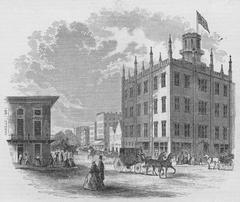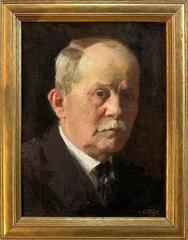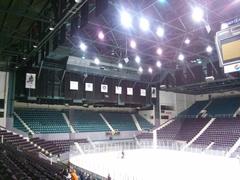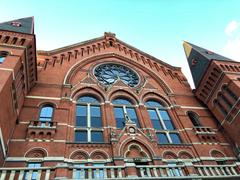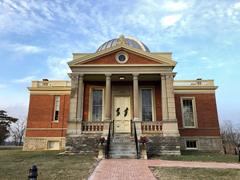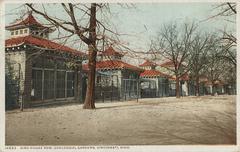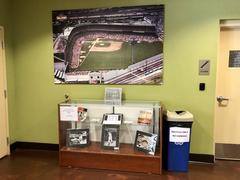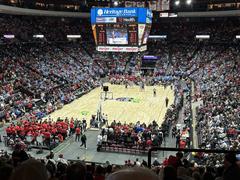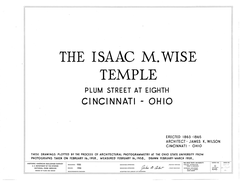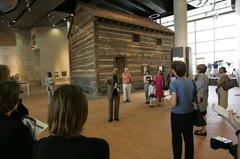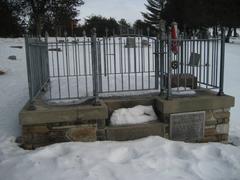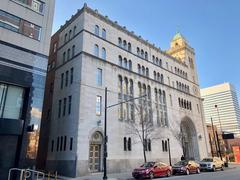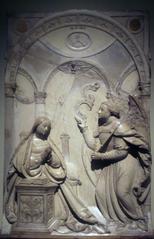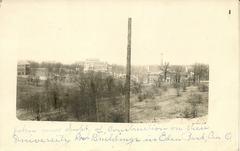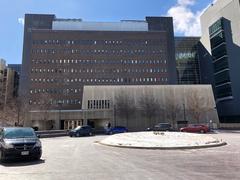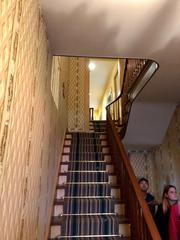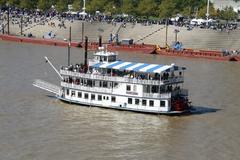
The Jacob Rader Marcus Center Of The American Jewish Archives
Jacob Rader Marcus Center of the American Jewish Archives: Visiting Guide, Tickets, Hours, and Tips
Date: 04/07/2025
Introduction
The Jacob Rader Marcus Center of the American Jewish Archives (AJA) in Cincinnati, Ohio, stands as a cornerstone for understanding the American Jewish experience. Housed on the historic campus of Hebrew Union College–Jewish Institute of Religion (HUC-JIR), the center preserves millions of documents, photographs, rare books, and oral histories that chronicle the evolution of Jewish life in the United States from the 18th century to the present. Whether you are a historian, genealogist, student, or traveler, the AJA offers a unique, accessible, and enriching experience that connects visitors to the vibrant tapestry of American Jewry.
This comprehensive visiting guide details everything you need to know—hours, admission, accessibility, travel tips, nearby attractions, special programming, and more—to make the most of your visit to one of Cincinnati’s premier historical sites.
Table of Contents
- Overview and History
- Mission and Key Collections
- Visitor Information
- Research and Facilities
- Programs, Tours, and Events
- Nearby Attractions
- Frequently Asked Questions (FAQ)
- Planning Tips
- Conclusion
- References
Overview and History
Founded in 1947 by distinguished historian Dr. Jacob Rader Marcus, the AJA was established to collect, preserve, and disseminate the documentary heritage of American Jews. Located at 3101 Clifton Avenue on the HUC-JIR campus, the center has played an integral role in documenting the history and growth of Reform Judaism and the broader American Jewish experience. Over the decades, the AJA has grown into one of the world’s leading repositories of Jewish Americana, supporting both scholarly research and public education (American Jewish Archives).
Mission and Key Collections
The mission of the AJA is to safeguard and make accessible the diverse narratives of American Jewry. The archives hold millions of items, including:
- Manuscripts and rare documents spanning the 18th to 21st centuries
- Photographs, audio-visual materials, and oral histories
- Rare books, genealogical records, and institutional archives
B’nai B’rith International Archives
In 2024, the AJA expanded its holdings with the acquisition of the B’nai B’rith International archives. This collection includes historic correspondences, organizational records dating back to the 1700s, and unique materials documenting American Jewish responses to global events, including anti-Semitism and Nazism (B’nai B’rith announcement).
Jews of Cincinnati Collection
The Jews of Cincinnati Collection offers a comprehensive look at the city’s Jewish community from 1824 to 1989. It highlights family histories, communal organizations, and the pivotal role Cincinnati played in the rise of Reform Judaism.
Visitor Information
Location and Directions
- Address: 3101 Clifton Avenue, Cincinnati, OH 45220
- Campus: Hebrew Union College–Jewish Institute of Religion
By Car: Free visitor parking is available in the HUC-JIR front lot facing Clifton Avenue.
By Public Transit: The Cincinnati Metro bus system serves the Clifton area; consult current schedules for the most convenient routes.
Accessibility: The building is fully accessible for visitors with mobility needs, including ramps, elevators, and accessible restrooms.
Hours and Admission
- Monday–Thursday: 9:00 AM – 5:00 PM
- Friday: 9:00 AM – 3:00 PM
- Closed: Weekends and major Jewish and federal holidays
Admission: Free for all visitors; no tickets required.
Reservations: Walk-ins are welcome, but research appointments or group tours should be scheduled in advance for the best experience.
(AJA FAQ)
Accessibility
- Fully wheelchair accessible, with ramps, elevators, and accessible restrooms.
- Staff are available to assist visitors with special needs.
- For additional accommodations, contact the archives before your visit.
Research and Facilities
Barrows-Loebelson Family Reading Room
The main reading room combines historic architecture with modern amenities, including:
- High-speed Wi-Fi and computer workstations
- Comfortable seating for study and quiet research
- Professional staff assistance for locating and using materials
- Access to digital catalogs, microfilm readers, and genealogical databases
Research Policies
- Registration and valid ID are required at check-in.
- Only essential research materials are allowed in the reading room; lockers are provided for personal items.
- Food and drinks are not permitted.
- Photography for personal use may be allowed with staff approval.
- Archival materials must be handled with care; gloves provided for fragile items.
Genealogical Resources
Researchers and family historians can access the digitized First American Jewish Families database and other vital records, with guidance from expert staff.
Programs, Tours, and Events
- Guided Tours: Available by appointment for individuals and groups; periodic public tours offered during special events (American Israelite).
- Lectures and Workshops: Regularly scheduled educational programs, lectures, and symposia.
- Exhibitions: Rotating displays featuring historical documents, photographs, and thematic exhibits in partnership with the Skirball Museum (FotoFocus Biennial).
- Research Fellowships: Twelve endowed fellowships are available for scholars in American Jewish studies (Wikipedia).
Nearby Attractions
- Klau Library: Adjacent to the AJA; the largest Jewish library in the United States.
- Skirball Museum: Features Jewish art and cultural exhibitions.
- Cincinnati Art Museum and National Underground Railroad Freedom Center: Additional cultural highlights within easy reach.
- Clifton Neighborhood: Offers cafes, restaurants, and historic architecture for a complete cultural day.
Frequently Asked Questions (FAQ)
Q: What are the visiting hours?
A: Monday–Thursday, 9:00 AM–5:00 PM; Friday, 9:00 AM–3:00 PM. Closed weekends and major holidays.
Q: Is admission free?
A: Yes, there is no charge for entry.
Q: Can I schedule a guided tour?
A: Yes, guided tours are available by advance appointment.
Q: Is the facility accessible for visitors with disabilities?
A: Yes, the building is fully accessible.
Q: Can I take photos inside?
A: Non-flash photography is permitted in some areas with staff approval.
Q: Are digital resources available?
A: Yes, the AJA offers a rich online catalog and virtual tours on its website.
Q: Are there genealogical resources?
A: Yes, extensive genealogical databases and staff support are available onsite and online.
Planning Tips
- Check the official AJA website for up-to-date hours, closures, and event information.
- Reserve research appointments or tours in advance for personalized assistance.
- Bring valid identification for registration.
- Allow ample time (at least a few hours) to explore the collections and exhibitions.
- Plan to visit nearby attractions for a fuller experience of Cincinnati’s cultural landscape.
- Follow the AJA on social media for news about special events and new exhibits.
Conclusion
The Jacob Rader Marcus Center of the American Jewish Archives is an essential destination for anyone seeking to connect with American Jewish history and Cincinnati’s cultural heritage. With free admission, welcoming facilities, and a wealth of archival treasures, the Center provides a meaningful and educational experience for researchers and casual visitors alike. Plan your visit today to discover the stories that have shaped generations of American Jewish life, and enrich your journey through one of Cincinnati’s most important historical sites.
For the latest updates, planning tools, and event schedules, visit the official AJA website.
References
- American Jewish Archives
- AJA FAQ
- AJA Visit Info
- B’nai B’rith announcement
- American Israelite article
- FotoFocus Biennial
- Wikipedia: The Jacob Rader Marcus Center of the American Jewish Archives
Images:
- Exterior of the Jacob Rader Marcus Center (alt: “Jacob Rader Marcus Center American Jewish Archives exterior in Cincinnati”)
- Barrows-Loebelson Family Reading Room (alt: “Jacob Rader Marcus Center visiting hours - Barrows-Loebelson Family Reading Room interior”)
- Historic documents, such as Moses Seixas’s 1790 letter (alt: “American Jewish Archives exhibition display”)

